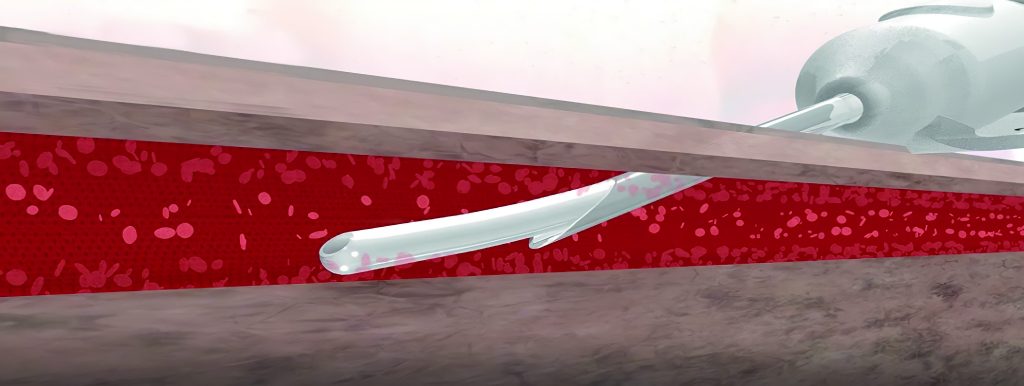Skydance Vascular Study Shows a Reduction in Insertion-Related Contamination in an Ovine Study.
The ovine study found that the Osprey PIVC, had superior outcomes compared to a traditional PIVC.”— JAVA
DELRAY BEACH, FLORIDA, UNITED STATES, March 21, 2023 /EINPresswire.com/ — Skydance Vascular, a medical device company that re-imaged the Peripheral Intravenous Catheter (PIVC), has released the findings of a research paper titled “The Potential Role of through the Needle PIVC Insertion in Reducing Early Catheter Contamination” in the Journal of Vascular Access. The study highlights the groundbreaking design of the company’s Osprey PIVC, which has the potential to significantly reduce exposure to infection-causing skin bacteria during insertion and subsequently lowering complications linked to traditional PIVC technology.
The ovine study found that the Osprey PIVC had superior outcomes compared to a traditional PIVC. Specifically, the Osprey PIVC, which uses a catheter through-the-needle design rather than the traditional over-the-needle design, demonstrated less contamination than other PIVCs during insertion, highlighting the potential of through-the-needle technologies as a promising alternative.
“We are pleased to share the findings of our research, which showcase the positive impact our unique design can have on patients,” said Michael Anstett, Chief Clinical Officer at Skydance Vascular and lead author of the study. “Our catheter-protection approach is simple, highly effective, and has the potential to revolutionize our approach to mitigating PIVC complications.”
Robert E. Brainard, Ph.D., a co-author of the study and clinical scientist, commented, “These results are promising and represent a significant advancement in preventing PIVC complications. We believe this new through-the-needle design has the potential to transform the lives of millions of people worldwide who suffer from complications linked to the current over-the-needle PIVC.”
The research paper is available online in the Journal of the Association for Vascular Access and can be accessed at https://www.avainfo.org/page/java-public.
About SkyDance Vascular
SkyDance Vascular, founded in 2017, has redesigned the Peripheral Intravenous Catheter (PIVC). The Osprey PIVC, which will be launched later in 2023, is expected to positively impact PIVC bloodstream infections utilizing a uniquely designed process called Skin Avoidance Technology. Its goal will be to deliver greater first-attempt success and lower complication rates, improve dwell times and better completion of therapy rates, and improve patient satisfaction. The company has assembled an executive leadership group comprised of individuals with decades of executive, clinical, regulatory, and engineering experience who have built and successfully exited other companies in the vascular access space. For more information, visit www.skydancevascular.com or contact Bill Bold at bill.bold@ospreyvascular.com.
About the Association for Vascular Access
The Association for Vascular Access (AVA) is an association of healthcare professionals founded in 1985 to promote the emerging vascular access specialty. AVA’s mission is to advance global vascular access practice through awareness, advocacy, and education to improve healthcare outcomes. Its multidisciplinary membership advances research, provides professional and public education to shape practice and enhance patient outcomes, and partners with the device manufacturing community to bring about evidence-based innovations in vascular access.
About Robert E. Brainard, PhD
Dr. Robert Brainard earned his MS and Ph.D. from the University of Louisville School of Medicine in 2012 in Cardiovascular Physiology with an emphasis on elucidating the cardiometabolic mechanisms differentiating pathological versus physiological cardiac hypertrophy. Dr. Brainard then completed a postdoctoral fellowship at the Sanford-Burnham Medical Research Institute in Orlando, Florida. He was recruited back to UofL in 2017, where he holds a tenure-track assistant professorship within the department of Physiology. His current roles include teaching in medical, dental, and graduate schools and conducting in vivo cardiovascular research at the Center for Cardiometabolic Science.
###










